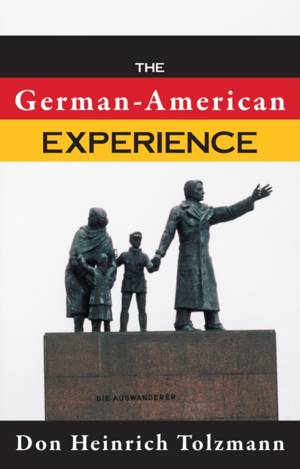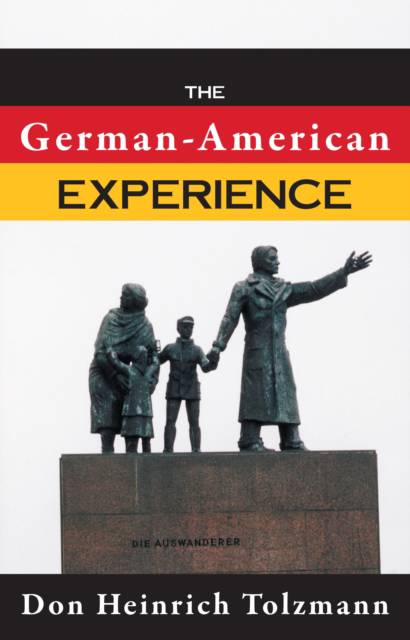
Bedankt voor het vertrouwen het afgelopen jaar! Om jou te bedanken bieden we GRATIS verzending (in België) aan op alles gedurende de hele maand januari.
- Afhalen na 1 uur in een winkel met voorraad
- In januari gratis thuislevering in België
- Ruim aanbod met 7 miljoen producten
Bedankt voor het vertrouwen het afgelopen jaar! Om jou te bedanken bieden we GRATIS verzending (in België) aan op alles gedurende de hele maand januari.
- Afhalen na 1 uur in een winkel met voorraad
- In januari gratis thuislevering in België
- Ruim aanbod met 7 miljoen producten
Zoeken
Omschrijving
Representing one-fourth of the population, German-Americans constitute the largest ethnic element, according to the U.S. Census, with well over 60 million people claiming German heritage. In twenty-six states, they comprise at least 20 percent of the population, and in five states they number more than 50 percent-important statistics in understanding the role played by German-Americans in U.S. history. The German-American Experience provides a comprehensive record of the essential facts in the history of this group, from its first U.S. settlements in the seventeenth century to the present. Beginning with "The Age of Discovery," this volume explores the earliest contacts between America and Germany, immigration and settlement patterns of Germans, foundations of German-American community life, their major involvement in the American Revolution, and the role German-Americans played in our Civil War. Both world wars are chronicled, including the anti-German sentiment and the internment of German-Americans during both wars. The revival of German heritage and the renaissance of German-American ethnicity since the 1970s is surveyed, along with recent events, including the impact of German unification and the 1990 census. The author also analyzes German-American influences on agriculture, industry, religion, education, music, art, architecture, politics, military service, journalism, literature, and language. In addition, he comments on prominent German-Americans, German names, sister cities, historical statistics, and much more.
Specificaties
Betrokkenen
- Auteur(s):
- Uitgeverij:
Inhoud
- Aantal bladzijden:
- 466
- Taal:
- Engels
Eigenschappen
- Productcode (EAN):
- 9781573927314
- Verschijningsdatum:
- 1/01/2000
- Uitvoering:
- Paperback
- Formaat:
- Trade paperback (VS)
- Afmetingen:
- 154 mm x 228 mm
- Gewicht:
- 639 g

Alleen bij Standaard Boekhandel
+ 146 punten op je klantenkaart van Standaard Boekhandel
Beoordelingen
We publiceren alleen reviews die voldoen aan de voorwaarden voor reviews. Bekijk onze voorwaarden voor reviews.









